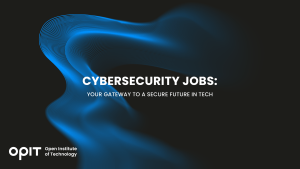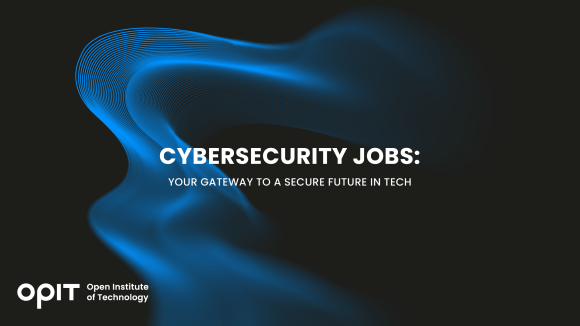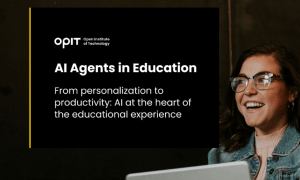

Cybersecurity has been a necessity ever since the advent of digital technology. However, decades ago, few would’ve envisaged just how much demand would eventually grow. Information technology is now such an integral part of modern life, everyone needs to safeguard their digital footprint.
As a result, demand for cybersecurity professionals has never been greater. Let’s take a closer look at both the governmental and private sector positions now available.
The Landscape of Cybersecurity Jobs
The roles within the scope of cybersecurity are broad but united by a common goal: protecting digital assets. Each cybersecurity job relies on another for a comprehensive cyber defense system. Here are some examples:
- Security analysts scrutinize and fortify network defenses.
- Ethical hackers preemptively probe systems for vulnerabilities.
- Incident responders who manage the aftermath of security breaches.
- Security architects who design robust security structures.
- Compliance officers who verify and promote adherence to data protection laws and regulations.
- Malware analysts analyze the nature of malicious software to develop defenses against it.
- Network security engineers take care of the security of an organization’s network from threats and vulnerabilities by installing firewalls and running tests, among other activities.
- Cybersecurity consultants share expert advice to organizations on how to protect their digital assets and follow regulations.
- Information security managers oversee the operations of an organization’s information security department.
- Penetration testers, much like ethical hackers, are authorized to attack systems to find vulnerabilities from an adversary’s perspective.
- Forensic computer analysts, the “detectives” of cybersecurity, investigate cybercrimes by analyzing digital evidence to track down perpetrators and find out the details of a breach.
- Chief information security officer (CISO) is a high-ranking executive responsible for an organization’s overall security strategy against cyber threats.
These professionals are collectively in high demand across various industries. Healthcare, government, finances, and technology, to name but a few. All these industries now depend on valuable documents and client information stored in local databases or the cloud. They also typically boast websites, for both client services and information, which may be targets for malicious actors and attackers. This diversity underscores the universal relevance of cybersecurity, transcending industry boundaries.
Qualifications and Skills for Cybersecurity Careers
Education, certifications, and hands-on experience collectively underpin the path to a cybersecurity job. It’s worth knowing that for you to succeed in the field, you don’t absolutely need a specialized degree, though it certainly helps. However, a bachelor’s degree in computer science, information technology, or a specialist cybersecurity qualification will give you a strong foundation.
Still, the field also places a premium on specialized certifications. Certifications such as CompTIA Security+, Certified Information Systems Security Professional (CISSP), Certified Ethical Hacker (CEH), along with OPIT’s master’s degree in cybersecurity are accolades that signify a professional’s know-how in the field. As such, they will likely put you ahead of the competition for a job position. The competition for cybersecurity jobs is strong, so try and obtain all the qualifications you can get.
OPIT’s MSc in Enterprise Cybersecurity program is one of the best examples of the integration of various fields that link together to create comprehensive cybersecurity measures. It combines theoretical knowledge with practical application, such as simulated cyberattacks, or problems modeled after real-world cyber emergency situations. The program covers a broad spectrum of topics, such as network security, threat intelligence, and legal aspects and ethical considerations.
One of the most valuable cybersecurity skills isn’t one that could be passed down through books or traditional lectures. That skill is strategic thinking. Your strategic mind must be ready to come up with actionable solutions in the heat of the moment, possibly as a response to a situation you’ve never seen before. For that reason, expect this ability to be scrutinized at a cybersecurity job interview.
Building a Career in Cybersecurity: Here’s How You Do It
As mentioned, building a career in cybersecurity takes continuous learning and adaptation, even after you land the job. After laying groundwork for understanding the field through formal education and certification, follow up with internships and entry-level positions. This way, you’ll get invaluable hands-on experience in scenarios that aren’t simulated, rather scenarios with real-life consequences. This is your chance to prove yourself and put what you’ve learned to the test while making a difference for genuine clients or employers.
OPIT offers you a curriculum that balances academic rigor with practical relevance. Students taking this course engage in project-based learning, simulations, and internships, gaining exposure to the challenges they’ll face in their professional careers. Furthermore, OPIT’s strong industry connections mean that students have a one-of-a-kind opportunity to network with seasoned cybersecurity professionals and organizations. This kind of access opens doors to possible quick employment opportunities once you’re out of the program.
Trends in Cybersecurity Employment
Technological advancements drive bad actors to find new vulnerabilities to exploit. For example, the recent rise of AI and machine learning has enabled more sophisticated threat detection and response mechanisms. However, these technologies have their weak spots, many of which are substantially different from what cybersecurity specialists are used to handling.
Recent reports warn of “worms” that could be injected into language models to fish for users’ personal data. Another interesting phenomenon is a tool that claims to “poison” an AI’s training data against training on copyrighted art. In the wrong hands, this could cause significant damage.
Furthermore, “traditional” malware isn’t going anywhere, particularly with the rise of ransomware and identity theft in the last few years. The same goes for malicious software installing crypto miners without a user’s consent. The demand for cybersecurity professionals will grow exponentially, with the Bureau of Labor Statistics projecting a 31% increase in employment of information security analysts from 2019 to 2029. A rate much higher than the average for other occupations.
Security for All
The field of cybersecurity jobs is a promising career path for those looking to make a significant impact in the tech industry. As digital threats proliferate, the need for skilled professionals to combat them has never been greater. OPIT’s cybersecurity programs are at the forefront of this challenge, giving students the knowledge, skills, and insights needed to secure a rewarding future career.
Related posts

Source:
- Times of Malta, published on September 18th, 2025
4 min read
The gathering brought together academics and technology leaders from prominent European Institutions, such as Instituto de Empresa (IE University), OPIT itself and the Royal College of Arts, to explore how artificial intelligence is reshaping the university experience.
The OPIT AI Copilot has been trained on the institute’s complete academic archive, a collection created over the past three years that includes 131 courses, more than 3,500 hours of recorded lectures, 7,500 study resources, 320 certified assessments, and thousands of exercises and original learning documents.
Unlike generic AI tools, the Copilot is deeply integrated with OPIT’s learning management system, allowing it to track each student’s progress and provide tailored support.
This integration means the assistant can reference relevant sources within the learning environment, adapt to the student’s stage of study, and ensure that unreleased course content remains inaccessible.
A mobile app is also scheduled for release this autumn, that will allow students to download exercise and access other tools.
During examinations, the Copilot automatically switches to what the institute calls an “anti-cheating mode”, restricting itself to general research support rather than providing direct answers.
For OPIT’s international community of 500 students from nearly 100 countries, many of whom balance studies with full-time work, the ability to access personalised assistance at any time of day is a key advantage.
“Eighty-five per cent of students are already using large language models in some way to study,” said OPIT founder and director Riccardo Ocleppo. “We wanted to go further by creating a solution tailored to our own community, reflecting the real experiences of remote learners and working professionals.”
Tool aims to cut correction time by 30%
The Copilot will also reduce administrative burdens for faculty. It can help grade assignments, generate new educational materials, and create rubrics that allow teachers to cut correction time by as much as 30 per cent.
According to OPIT, this will free up staff to dedicate more time to teaching and direct student engagement.
At the Milan event, Rector Francesco Profumo underlined the broader implications of AI in higher education. “We are in the midst of a deep transformation, where AI is no longer just a tool: it is an environment that radically changes how we learn, teach, and create,” he said.
“But it is not a shortcut. It is a cultural, ethical, and pedagogical challenge, and to meet it we must have the courage to rethink traditional models and build bridges between human and artificial intelligence.”
OPIT was joined on stage by representatives from other leading institutions, including Danielle Barrios O’Neill of the Royal College of Art, who spoke about the role of AI in art and creativity, and Francisco Machin of IE University, who discussed applications in business and management education.
OPIT student Asya Mantovani, also employed at a leading technology and consulting firm in Italy, gave a first-hand account of balancing professional life with online study.
The assistant has been in development for the past eight months, involving a team of OPIT professors, researchers, and engineers.
Ocleppo stressed that OPIT intends to make its AI innovations available beyond its own institution. “We want to put technology at the service of higher education,” he said.
“Our goal is to develop solutions not only for our own students, but also to share with global institutions eager to innovate the learning experience in a future that is approaching very quickly.”

From personalization to productivity: AI at the heart of the educational experience.
Click this link to read and download the e-book.
At its core, teaching is a simple endeavour. The experienced and learned pass on their knowledge and wisdom to new generations. Nothing has changed in that regard. What has changed is how new technologies emerge to facilitate that passing on of knowledge. The printing press, computers, the internet – all have transformed how educators teach and how students learn.
Artificial intelligence (AI) is the next game-changer in the educational space.
Specifically, AI agents have emerged as tools that utilize all of AI’s core strengths, such as data gathering and analysis, pattern identification, and information condensing. Those strengths have been refined, first into simple chatbots capable of providing answers, and now into agents capable of adapting how they learn and adjusting to the environment in which they’re placed. This adaptability, in particular, makes AI agents vital in the educational realm.
The reasons why are simple. AI agents can collect, analyse, and condense massive amounts of educational material across multiple subject areas. More importantly, they can deliver that information to students while observing how the students engage with the material presented. Those observations open the door for tweaks. An AI agent learns alongside their student. Only, the agent’s learning focuses on how it can adapt its delivery to account for a student’s strengths, weaknesses, interests, and existing knowledge.
Think of an AI agent like having a tutor – one who eschews set lesson plans in favour of an adaptive approach designed and tweaked constantly for each specific student.
In this eBook, the Open Institute of Technology (OPIT) will take you on a journey through the world of AI agents as they pertain to education. You will learn what these agents are, how they work, and what they’re capable of achieving in the educational sector. We also explore best practices and key approaches, focusing on how educators can use AI agents to the benefit of their students. Finally, we will discuss other AI tools that both complement and enhance an AI agent’s capabilities, ensuring you deliver the best possible educational experience to your students.
Have questions?
Visit our FAQ page or get in touch with us!
Write us at +39 335 576 0263
Get in touch at hello@opit.com
Talk to one of our Study Advisors
We are international
We can speak in:
